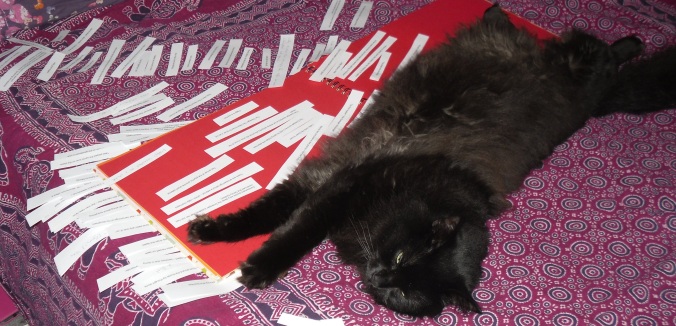You set your book in 1970s Britain and it’s only to be expected, I suppose, that at some point in the proceedings your cast will go on strike. The ‘C’ word hasn’t helped. By which, of course, I mean Christmas. My novel, like so many others, no doubt, has been gathering virtual dust while I’ve battled old ladies for last jars of mincemeat, and spent half my annual earnings on postage, and queued up for 22 hours for a £1.50 stocking filler (without which said stocking is bound to seem woefully empty somehow). But the rumblings had already started, to tell you the truth: I think Christmas was just an excuse, for this writer at least, to step back and take stock of the Magnum Opus. And one thing was stunningly, immediately obvious: my characters have gone Off Message. This isn’t all bad, though. As Isabel Allende describes it (on the utterly wonderful Brain Pickings): ‘When you feel the story is beginning to pick up rhythm—the characters are shaping up, you can see them, you can hear their voices, and they do things that you haven’t planned, things you couldn’t have imagined—then you know the book is somewhere, and you just have to find it, and bring it, word by word, into this world.’ This is all very comforting of course – because there’s (almost) nothing finer than spending time with characters who’ve sprung to life at last – but what of this thing we call ‘plot’? I had plans for these characters, way back when: an itinerary of activities to keep them all occupied, like overseas visitors you’ve dutifully – reluctantly – agreed to escort on a sightseeing tour: ‘No, but Tuesday we’re doing the Houses of Parliament. Windsor Castle’s on Wednesday. Madame Tussauds? But we’re not even going to Madame Tussauds… Look, I emailed this weeks ago…’

Once upon a time I had a plot. My cat was guarding it. He fell asleep. Perhaps that was the problem.
If you’ve come within sniffing distance of National Novel Writing Month then you’ll certainly know of the NaNo folklore that two types of writers exist, known as plotters and pantsers. The plotters, of course, are self-explanatory (lovers of file cards, character profiles, hard and fast outlines. Call round to their house and you’ll most likely find their CDs neatly marshalled according to some kind of arcane system – date of release divided by number of band members, for instance, multiplied by Pi). Pantsers are not German tanks, as you might be imagining, but rather are writers who fly by the seat of their pants (which is rather a wonderful image, when you really think about it). Call round to a pantser’s house of an evening and follow the trail of their last music session like breadcrumbs from one incorrectly-replaced CD to another. (As every unfortunate guest will know, I fall squarely in Category B.) But, of course, it’s not really that simple, is it? The late, great children’s author Diana Wynne Jones saw four distinct camps, not two, and I’m rather inclined to agree: 1. Careful planners (who need to know every last twist in advance). 2. Avid researchers (short on plot, but long on background). 3. Back to front and inside out writers (who might start with chapter 11). 4. DWJ’s own method: ‘I know the beginning and what probably happens in the end, plus a tiny but extremely bright picture of something going on in the middle.’ (You can read the full article here. While it’s aimed at children, it’s perfectly pertinent, too, for the adult writer).

And when you’ve read the article, give yourself a treat and read this book. Pure joy from start to finish.
Myself, I’m a 4. I’ve tried plotting – I really have tried – but the plot (wildly good as it seems in the abstract) can only translate into concrete reality if the cast you’ve created decides to play ball. And, ay, there’s the rub. You can move them around all you like when they’re still only names on a neat set of file cards, but once they’re alive – I mean really alive – they can give you the old two-fingered salute any time they flipping well want to. ‘Characters are not created by writers,’ said Elizabeth Bowen. ‘They pre-exist and have to be found.’ And she’s right, I think – or, at least, in the sense that all characters (probably) spring into life as composites of the many hundred – thousand – people we’ve met in real life. They’re like teenagers (trust me on this; I’m the mother of one): and as every mum knows you can take a hot-headed teen to the instrument of your choice but you can’t make them practise… and so it is with characters. You can spend your whole morning with shoehorn in hand – ‘you will poison the schoolmaster’s wife, because I have decreed it… but what do you mean you’re in love with the schoolmaster’s wife? Oh god, NO, because, look, now you’ve sunk the whole plot’ – till your characters head to the picket line, placards in hand, and perhaps they’re unusually stubborn, my cast, but they’re not going to budge, not a muscle, until I’ve re-written the script of their lives. Am I going to give in? Well, of course I am.



